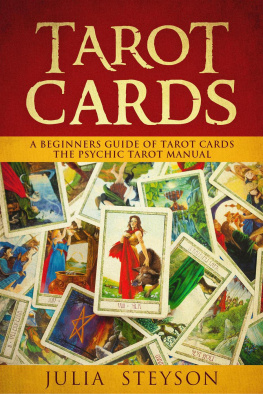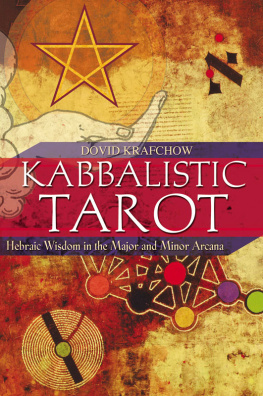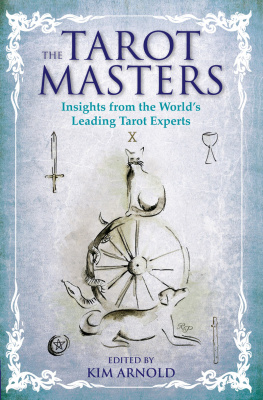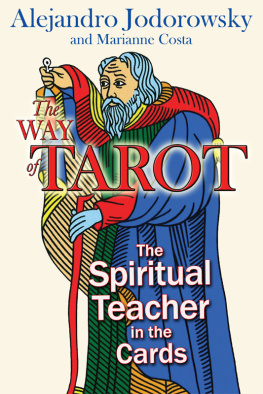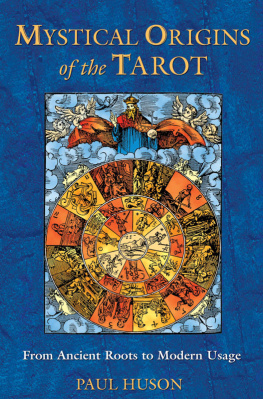Stephen E. Flowers - The Magian Tarok: The Origins of the Tarot in the Mithraic and Hermetic Traditions
Here you can read online Stephen E. Flowers - The Magian Tarok: The Origins of the Tarot in the Mithraic and Hermetic Traditions full text of the book (entire story) in english for free. Download pdf and epub, get meaning, cover and reviews about this ebook. year: 2019, publisher: Inner Traditions, genre: Science fiction / Religion. Description of the work, (preface) as well as reviews are available. Best literature library LitArk.com created for fans of good reading and offers a wide selection of genres:
Romance novel
Science fiction
Adventure
Detective
Science
History
Home and family
Prose
Art
Politics
Computer
Non-fiction
Religion
Business
Children
Humor
Choose a favorite category and find really read worthwhile books. Enjoy immersion in the world of imagination, feel the emotions of the characters or learn something new for yourself, make an fascinating discovery.

- Book:The Magian Tarok: The Origins of the Tarot in the Mithraic and Hermetic Traditions
- Author:
- Publisher:Inner Traditions
- Genre:
- Year:2019
- Rating:5 / 5
- Favourites:Add to favourites
- Your mark:
The Magian Tarok: The Origins of the Tarot in the Mithraic and Hermetic Traditions: summary, description and annotation
We offer to read an annotation, description, summary or preface (depends on what the author of the book "The Magian Tarok: The Origins of the Tarot in the Mithraic and Hermetic Traditions" wrote himself). If you haven't found the necessary information about the book — write in the comments, we will try to find it.
Explores the Magian teachings on the Stoeicheia and how this magical alphabet was the template for the Tarot
Explains how the sequencing of the Major Arcana is related to the images used in Mithraic initiation
Looks at the original meanings of the Major Arcana using Mithraic symbolism, as well as the deep-level connections of the Tarot with Egypt, the Romani people, the Semitic tradition, and runes
The Tarot is a mythic map of the world and of consciousness. It offers a meta-language of signs and symbols that communicate their meaning precisely. Yet the true origins of the Tarot remain shrouded in mystery. These oracular cards have long been thought to have come from Egypt or from the Gypsies, but as Stephen E. Flowers reveals, their original roots lie in the Mithraic tradition of the Persian Magi.
In this book, Flowers explores the historical roots and mythology of the symbolic images that became known as the Tarot. Drawing on theories first pioneered by the Swedish scholar Sigurd Agrell (1881-1937), he reveals the genesis of the Tarots symbolism in the great Hermetic tradition at the same time the Magical Papyri were being written in Greco-Roman Egypt. He explains how the sequencing of the Major Arcana is related to the images used in Mithraic initiation, elements of which were then integrated into existing Roman and Egyptian traditions. Exploring the Magian teachings on the Stoeicheia, an alphabet that acted as a map for understanding the order of the cosmos, he demonstrates how this alphabet of magical symbols was the template for the Tarot. The author also shows how the 22 Major Arcana cards were related to the 22 letters of the Roman alphabet used for oracular purposes in ancient times. Looking in-depth at the principles of Mithraism, the author explains how the Roman form of Mithraism, a guiding factor in the early shaping of the Tarot, was itself a synthesis of Iranian Magianism, Greek stoicism, Babylonian astrology, and Greco-Egyptian Hermeticism.
Exploring the cards themselves, Flowers then looks at the original meanings of the Major Arcana using Mithraic symbolism and its offshoots. He also explains the truth behind many of the myths surrounding the Tarot, including their deep-level connections with Egypt, the Romani people, the Semitic tradition, and runes. By restoring the original mysteria to the icons of the Tarot and learning their true origins, we can better understand the insight these powerful cards impart in divination.
Stephen E. Flowers: author's other books
Who wrote The Magian Tarok: The Origins of the Tarot in the Mithraic and Hermetic Traditions? Find out the surname, the name of the author of the book and a list of all author's works by series.


